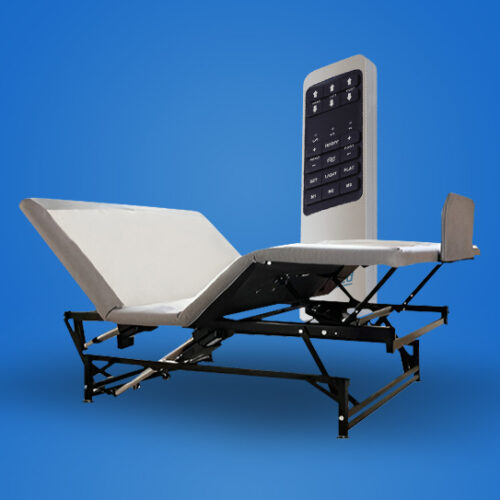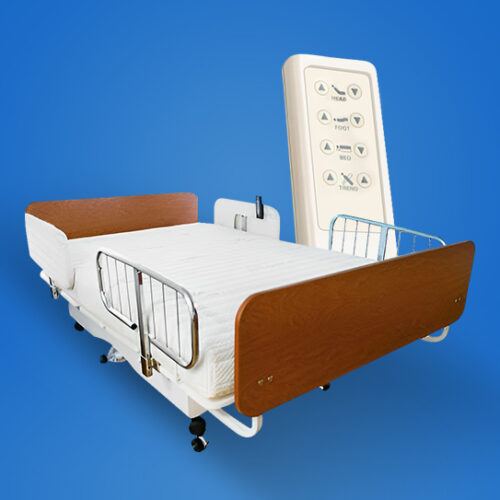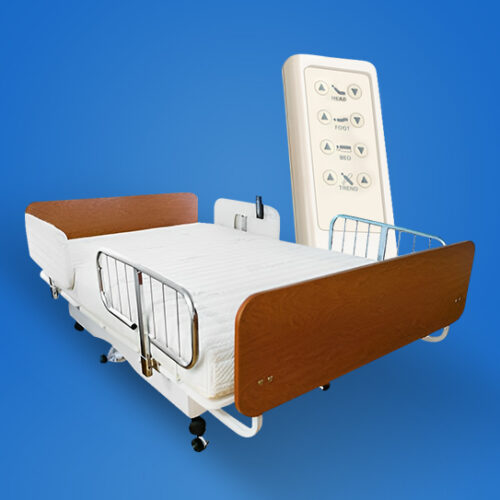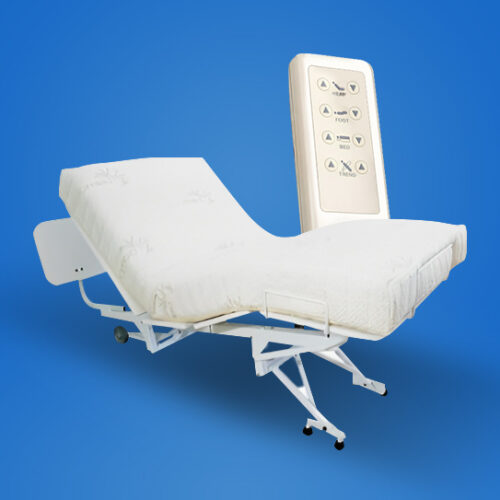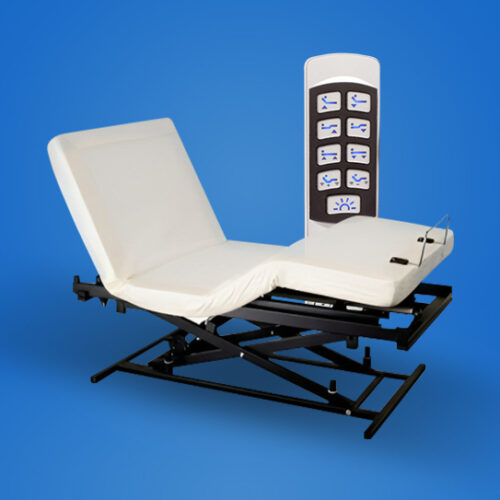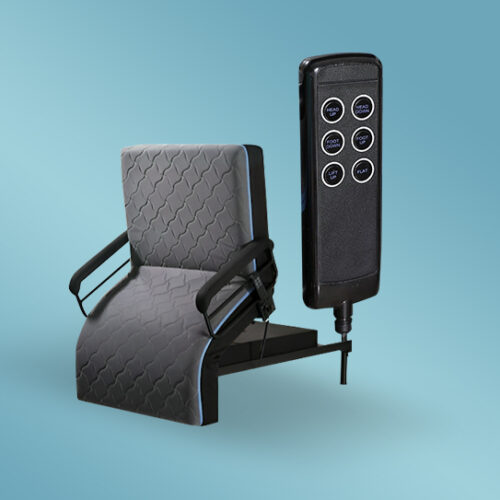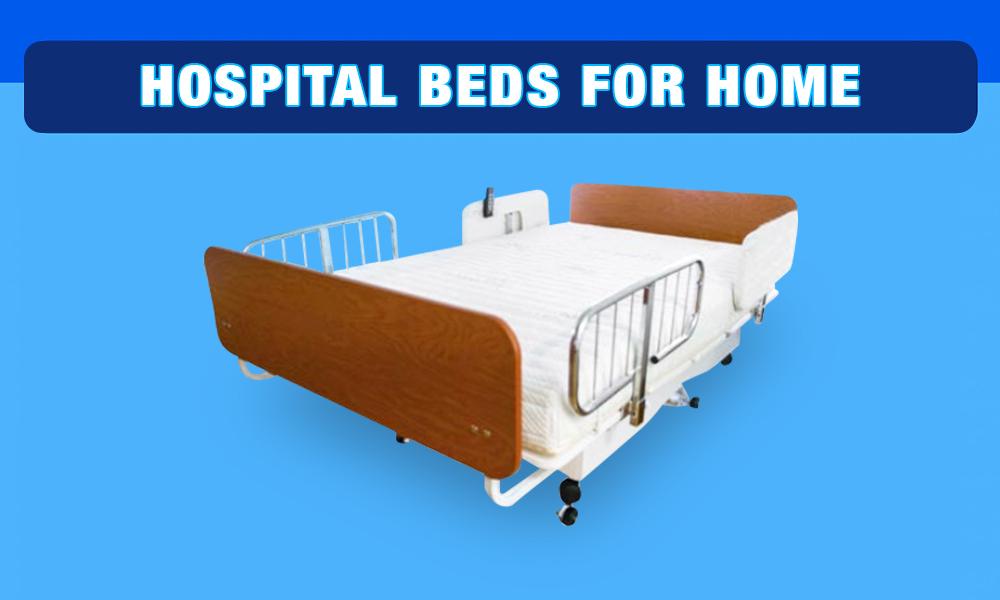Hospital Beds for Home
Hospital beds for home come in many different types, such as manual, semi-electric, fully electric, and bariatric hospital beds. In addition, there are also hospital-style beds that have hi-low features. To help the shopping experience, we have created a hospital bed for home guide.
Showing all 6 results
-
Sale!
Flex a Bed Hi-Low SL Adjustable Bed
See OUR Price In The Cart!
Split King • Queen • Full • Twin XL • TwinSelect options -
Sale!
Transfer Master Valiant Adjustable Bed
See OUR Price In The Cart!
Queen • Special Size • Full • TwinSelect options -
Sale!
Transfer Master Supernal 3 Hi Low Adjustable Bed
See OUR Price In The Cart!
Split King • Queen • Full • Twin XLSelect options -
Sale!
The Ultimate Flex Assist Adjustable Bed
$1,499.00 – $1,599.00
Twin XL • TwinSelect options
HOSPITAL BEDS FOR HOME BUYER'S GUIDE
What is the Best Hospital Bed for Home Use?
The needs of the user or the patient are what determines the best hospital bed . For example, the patient may have trouble moving. The best bed for him or her is that which can be raised or lowered as well as having adjustable height and angles. This will make getting in and out of bed easier. Some hospital beds can go into the reverse Trendelenburg and Trendelenburg position. The bed’s Trendelenburg position can help with leg swelling and low blood pressure. The reverse Trendelenburg can help with sleep apnea, acid reflux, or snoring. There are other patients such as those who are obese or the bariatric patients. The beds these people need are those that can carry heavy weights.
Hospital Beds for Home
Transfer Masters Supernal Hi Low Hospital Style Bed
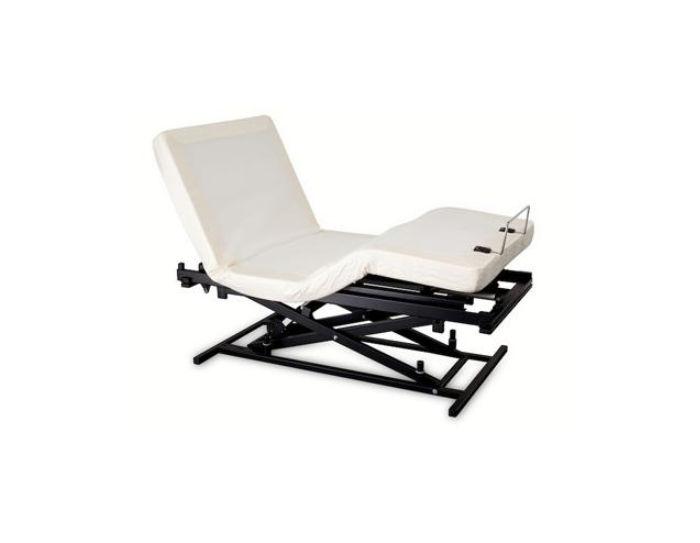
Sizes: Many Sizes
Special Features: Hi Low Feature, Wall Hugger
Highlights
- Massage
- Head Tilt
- Hi Low Feature
- Wall Hugger
WHY YOU SHOULD BUY
Features like the European head tilt and massage on a Transfer Master Hi-Low make it a popular hospital bed for sale. It has all the things you’d expect including head/foot positioning and Wallhugger. Casters for mobility and half rails compliment the functional 10” vertical high-low adjustment options.
Flex a Bed Hi Low Hospital Style Bed
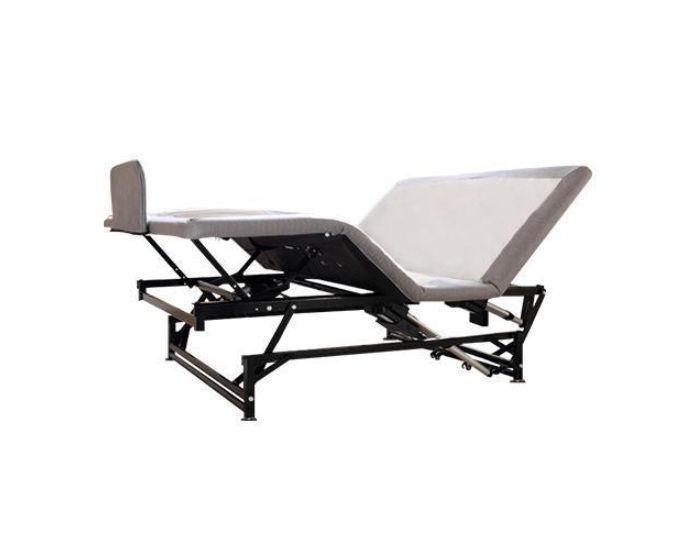
Sizes: Many Sizes
Special Features: Hi Low Features, Optional Longer Sizes
Highlights
- Targeted Support
- Vertical Adjustability
- Timed Massage
- High-Low Feature
- Optional Side Rails
WHY YOU SHOULD BUY
The Flex a bed Hi-Low SL prides itself with its high/low feature. The base can be raised and lowered vertically by pressing a button. It is a good option for those in home healthcare. There are bed rails that you can buy as accessories. There are also optional bed casters. that can be bought as accessories too and optional casters.
Ultimate Flex Assist Hospital Style Bed
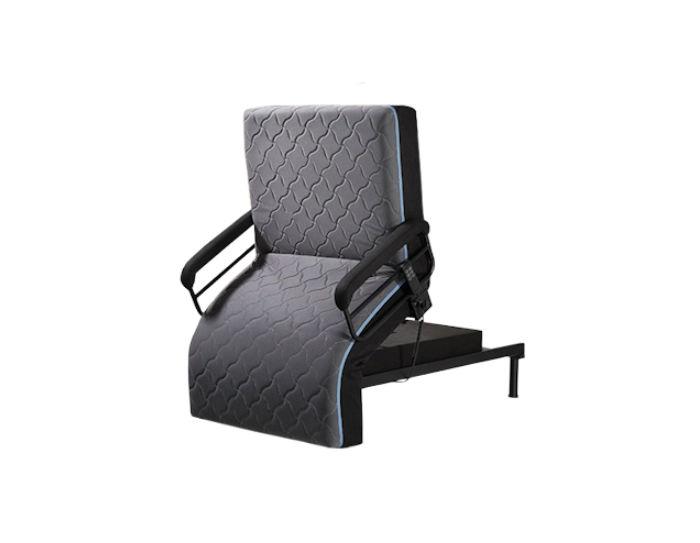
Sizes: 38″ x 75″, 38″ x 80″
Special Features: Lift Chair Recliner
Highlights
- Lift Chair Position
- Recliner Position
- Includes Medium Mattress
- Side Rails
WHY YOU SHOULD BUY
The All-N-One electric hospital bed comes complete with the base and mattress. Its comprehensive features include hi-low capability, massage, and various positions. These include seated position, lifted position, flat position, and reclining position. Another convenience in the All-N-One electric hospital bed is that the side rails are removeable. This can be a helpful service for those moving into and out of a wheelchair. The All-N-One hospital bed comes in only one size, a Twin XL. It makes a good hospital bed alternative because it has the hi-low feature and reclining lift chair position.
Types of Hospital beds
- Manual Hospital Beds: If your bed is one that is moved upwards by hand using a shaft or crank, that is a manual hospital bed. Sections of the bed can be moved such as the foot and the head. It can also be the entire bed itself.
- Full Electric Bed: There is no need for a hank crank when it comes to a full electric bed. Motorized movement is activated by the push of a button. The entire bed can be moved by leveling it down or up. It can also include the lowering or raising of the feet and head portions of the bed.
- Semi Electric Bed: The hybrid between a manual bed and full electric bed is the semi electric bed. In this kind of bed, the foot and head positioning move through a motorized element while the bed height is adjusted manually.
- Low Hospital Bed: For those patients who may be having difficulty with mobility, low hospital beds allow for safety. These models can be of great convenience because these create access to the bed more easily. It is lower to the floor making it of great convenience.
- Bariatric Hospital Beds: The advantage of bariatric hospital beds is its higher weight limits. Support of patients with heavier weights is what it is made of. You can get one is a super heavy duty or heavy duty depending on your specific weight capacity requirements.
Are there Different Sizes of Hospital Beds for Home?
There are different sizes of hospital beds for home. Below is a chart showing hospital bed dimensions. It shows all the standard hospital bed sizes and custom sizes for hospital beds.
- Split California King Hospital Bed: This size of hospital bed doesn’t often vary from one bed to another. A split California King hospital bed will come as two separate bases. Both will have identical measurements of 36 inches wide and 84 inches long.
- Split King Hospital Bed: Manufacturers can be pretty creative when it comes to designing Split King hospital beds. There are Split King’s that deviate from the average run of the mill size. These “custom” sizes can be made up from two bases that measure 38” x 74”, 38” x 80” or even 38” x 84”.
- Queen Hospital Bed: Queen hospital beds run the same size as traditional queen size mattresses. They are basically 60 inches wide and 80 inches long. This continues to be a popular size because it makes locating properly fitted bed sheets easy.
- Special Size Hospital Bed: One size hospital bed that doesn’t fit into any of the other size categories is the 48” x 80” hospital bed. This special size provides ample legroom for the average adult and more width than a Twin without upsizing to a Full.
- Full Hospital Bed: Each manufacture has Full size hospital beds that come in differing dimensions. These custom size beds alter the classic full to be more user friendly. For example, those who need more length may opt for a longer 53” x 84” model. Other full sizes include 53” x 74” and 53” x 80”.
- Twin Size Hospital Bed: The length of a Twin-size hospital bed can also be different between brands and models. The closest to a traditional twin is the 38” x 74” size. The 38” x 80” Twin hospital bed equates to the same dimensions of a standard Twin XL. A longer Twin that measures 38” x 84” is also available.
Hospital Beds Positions
- Head and Foot: The very basic function that will come on nearly every hospital bed is head and foot articulation. This simply means the head and the feet can be adjusted to an incline on each end of the bed. Most of the time this serves as two separate settings, controlled independently. The degree of incline can be different from one adjustable hospital bed to another. There are a couple advantages this function has on a hospital bed. First, it can go a long way to enhance comfort. Second, lifting can make it less taxing on caregivers who must administer care to these regions.
- Trendelenburg Position: This is a special position that doesn’t come on every hospital bed. When set in motion, this operation moves the bed into a distinctive posture. The head of the bed will be placed below the feet. The body remains aligned flat facing upwards. The feet portion of the hospital bed is raised up. The grade of incline/decline is approximately 10 degrees. This bed setting has previously been used by medical professionals to assist with access during surgery. Though, the at-home version is not meant for medical care. It could however, be used by a caregiver to have better reach when administering treatment. This position should be only used at the direction of a physician.
- Reverse Trendelenburg Position: As you may suspect, the Reverse Trendelenburg position is the opposite of the regular Trendelenburg. When triggered, the bed moves to where the head is up and the feet are down. The user will stay laying on his or her back while situated in this position. Meanwhile the entire body remains flat. These positions are sort of similar to an elevation feature because the entire bed horizon is adjusted. With typical positioning, the head and feet can be adjusted separately but the cause a bend at the waist. Hospital beds with Trendelenburg and Reverse Trendelenburg built in add another aspect of positioning.
- Cardiac Lift Chair Position: Trouble moving from a lying position can be eased using a cardiac lift chair position. This is a neat feature on hospital beds that has multiple uses and purposes. It has been used to reduce pressure and aid circulation. It also makes sitting up and getting out of bed easier from the flat position. Often times this feature involves multiple separate sections of the bed. This way the back is supported throughout the movement as well as the arms, legs and bottom. The cardiac chair lift is not available on all hospital beds. However, it is a really useful feature for many people.
- Lift Chair Position: Make the hospital bed lift up like a lift chair bed with the Lift Chair Position. This is a feature offered on the Ultimate Flex Assist Adjustable Bed. It acts similar to the Cardiac Lift in that it moves into a chair position and then tilts the body forward. That makes transitioning from laying down to sitting to standing up much easier. It can be beneficial for those who struggle with core strength or generally have difficulty getting up from bed.
- Hi Low: What makes a true hospital bed is the high and low feature. The high-low height adjustment makes getting in and out of bed much easier for the elderly or injured. Climbing into a bed that has higher height can force a person to put pressure on joints and muscles. A little pressure may not impact everyone the same. When someone is suffering from a leg injury, for example, a little pressure might cause damage or slow the healing process. Other medical conditions such as Dementia can make it more difficult to get in and out of bed. For those requiring at-home care, hospital beds can make it easier for caregivers too. Less awkwardness while helping patients into bed may reduce the stress on a caregiver’s back. Different heights are used for different beds. The Transfer Master can be raised to 10”, and the Flex-a-Bed High Low can be raised 7”.
How to Buy the Right Hospital Bed for Home?
Let your needs and budget guide you when selecting from the many hospital beds. You might want to consider the height of the person who will be using the bed. If he or she requires a caregiver, you may want to choose a bed that has the ability to rise vertically higher depending on their height. If you can foresee the need to move the bed for cleaning or moving the person inside, casters are a must have. One feature that many people prefer – or even require in some cases – is massage. While medical beds for sale can have a number of additional features to choose from, these features can be supplemental. The most important things is that the bed meets any medical needs you have and that it fits within your budget.
- What is the budget?
- What are the requirements?
- Pick additional feature you may want.
- List the beds that meet all the requirements and fit into budget.
- Pick the best option for you.
Questions and Answers
How do you get a hospital bed for home?
There are different hospital beds that are made for home healthcare. The more popular brands of hospital beds are the Transfer master, Ultimate flex Assist, and Flexabed. Each brand has many models which have their own unique features.
Does Medicare cover hospital bed for home?
There are many different requirements for Medicare. Hospital beds are classified as durable medical equipment (DME). They are partially covered under Part B. The bed must be prescribed by your doctor for home use. Your doctor has to be enrolled in Medicare. The supplier of your hospital bed must also be enrolled in Medicare. You might even find that a hospital style bed may be more affordable than Medicare.
Why do I need a hospital bed at home?
There are many reasons one would need a hospital bed at home. For example, the person may struggle to get in and out of bed. In that case a hospital bed with a high/low feature can help the person or the caregiver in moving. The person may benefit if the bed has the Trendelenburg and reverse Trendelenburg features. The reverse Trendelenburg, in particular, can help with “inclined bed therapy”.
Other Related Articles
Bariatric Hospital Bed
Twin Hospital Bed
Full Size Hospital Bed
Queen Size Hospital Bed
